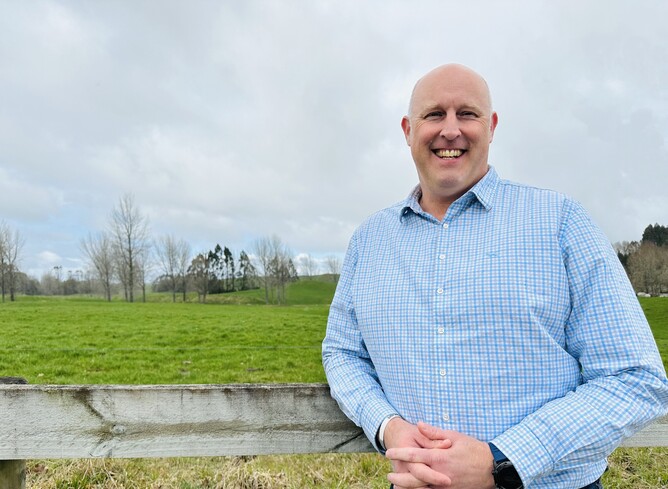By Grant Jackson, General Manager SealesWinslow
In the coming years, the New Zealand dairy industry will face growing pressure to evolve its approach to herd nutrition. While our pasture-based systems are the foundation of our international competitive advantage, there is a growing realisation that pasture may not be the whole story to enable farmers to meet immediate and future challenges.
We are all well versed in what those challenges are. Environmental obligations that require us to produce more with less while we tread as lightly as possible on our land and reduce emissions. Changing consumer preferences that demand the industry display its social license, and squeezed margins and rising costs as we navigate the waves of commodity markets.
While New Zealand has rightly long prided itself on its pasture-based systems, this evolving landscape requires a subtle shift in mindset. A mindset that embraces innovation and explores alternative feed strategies tailored to meet the changing needs of our national herd and the challenges ahead. Pasture will always be king and our industry’s key ingredient, but strategically supplementing our herds’ nutrition to maximise their genetic potential will be the crucial icing on the cake.
Embracing new nutritional strategies
Getting ruminant nutrition right will be pivotal to our dairy industry over the next 10-20 years. Embracing new nutritional strategies that support our pasture first approach will not just be advantageous but imperative. In fact, I’m confident a wholesale focus on nutrition optimisation across the sector can deliver our 2030 emissions targets.
From enhancing animal efficiency through optimised feeding practices to maximising genetic potential, mitigating environmental impacts by reducing nitrogen leaching and methane emissions, and prioritising animal welfare management through feeding strategies. How we feed our herds is critical.
Learning from our overseas counterparts
Historically, New Zealand's dairy sector has thrived on an abundance of lush pasture, but the changing dynamics we face call for a more nuanced approach. The integration of Northern Hemisphere genetics into our dairy herds has expanded their production capacity. But relying solely on pasture with occasional imported supplements focused only on volume may not optimise these cows’ genetic potential. This approach can lead to inefficiencies and unrealised gains, not to mention the growing challenges being raised around the use of palm kernel expeller (PKE).
In searching for answers New Zealand farmers could gain insights from the mixed ration approach favoured by our Northern Hemisphere counterparts. It is marked by a deep understanding of herds' cyclical and seasonal nutritional needs, supplementing pasture with additional starch and energy sources and key amino acids and minerals during critical stages of lactation.
And while our pasture-based systems have historically been lauded for their environmental credentials, the reality there is also more nuanced. Greater awareness and optimisation of our feed use could also eventually reduce our overall emissions.
Collaborating as an industry
The future of our industry is going to rely on more tailored feed ingredients, whether it’s methane inhibitors, enzymes to help digest grass more efficiently, or other materials that lift animal health and wellbeing along with productivity. Animal nutrition companies, in partnership with our industry bodies, have an important role to play in delivering these nutritional solutions to farmers and educating them about how to use supplementary feed to get the most out of their pasture.
As we look to the future, collaboration is key. Industry bodies must adapt their focus to reflect the evolving needs of farmers and their herds and provide education on nutrition strategies that will optimise productivity and minimise environmental impact.
Getting feed rationing right
A balanced, fully fed diet through lactation impacts every aspect of our farming system from health, cow condition, lactation length, and reproductive performance, along with the reduction in environmental impact. And it will drive the results being expected of our farmers into the future. It makes both common sense and financial sense. Getting our feed ration right 356 days of the year has been shown to increase farm productivity and boost farmers’ bottom lines by up to 30 percent.¹
Optimising herd nutrition and building on our pasture-based approach will also give farmers space to diversify their systems and increase on-farm feed grown crops other than grass.
Our industry's reliance on imported PKE as a supplementary feed is facing challenges amid shifting consumer preferences and environmental obligations to reduce greenhouse gas emissions.
Unlocking opportunities
As new environmental targets come into play, farmers will be forced to look for supplementary feed options closer to home, providing opportunities for domestic maize silage and feed grain growers. The opportunities we can unlock from optimising the national herds' nutrition and taking a more strategic approach to feeding our herds are serious and significant.
The future of New Zealand dairy farming lies in embracing evolving nutrition. Our grass is king approach is only part of the story. While it will always be the foundation of dairy farming in New Zealand, we need to take a more holistic approach to herd nutrition. Doing so will unlock the full genetic potential of our dairy herds, drive efficiency, sustainability and a prosperous future for our industry.
¹Using the Cornell Net Carbohydrate and Protein System (CNCPS), SealesWinslow carried out biological modelling to compare the effects of various feed combinations on milk production.
For more information, listen to Grant on the Farmers Weekly InFocus podcast here.
